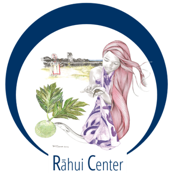Paea
Paea, located on the west coast of Tahiti, is the last municipality of the urban agglomeration. Despite its urban profile, it remains largely focused on fishing.© Lauric Thiault

13021
inhabitants in 2017

65 km²
of land
Paea, located on the west coast of Tahiti, a ancient rural district, is the last urban municipality in the agglomeration of Papeete. Largely oriented towards the head of the city, the population remains very attached to fishing: it is equipped with a marina and a fishing port which can accommodate bonitiers and potimarara. The tuna or aahi holes located outside the reef near the passes concentrate some of the activity, but fishing is also practiced inside the lagoon. If large nets, especially for ature fishing, have almost disappeared from the town, on the other hand, line and rifle fishing are widely practiced.
The urbanization of the town threatens coral ecosystems, especially because of the multiple risks of pollution (discharge of wastewater into the lagoon, for example).
What we have done
Project presentation and discussions with local authorities and population
- Meeting with the municipal team to present the methodology and tools available to the populations for the creation of a managed marine area and understand the context and local issues ;
- Meeting with representatives of fishers to discuss the issues they identify in the areas of fishing, changes in fish stocks, governance for resource management, etc.
Counts and feedback to the population
- Carrying out ecological monitoring with counting fish, invertebrates and identification of the substrate ;
- Feedback of results to fishermen and the population ;
- Exchanges on data and collection of opinions on a rāhui project.
Study for the integration of participatory governance for the creation and management of a rāhui in the municipality
- Mapping of coastal activities and land use ;
- Surveys of users in the territory lived in: identify the places and associated practices and uses and characterization of the ecological impacts of activities and uses on the lagoon ;
- Creation of a toponymic lexicon of the uses of the lagoon to support the establishment of the rāhui.
